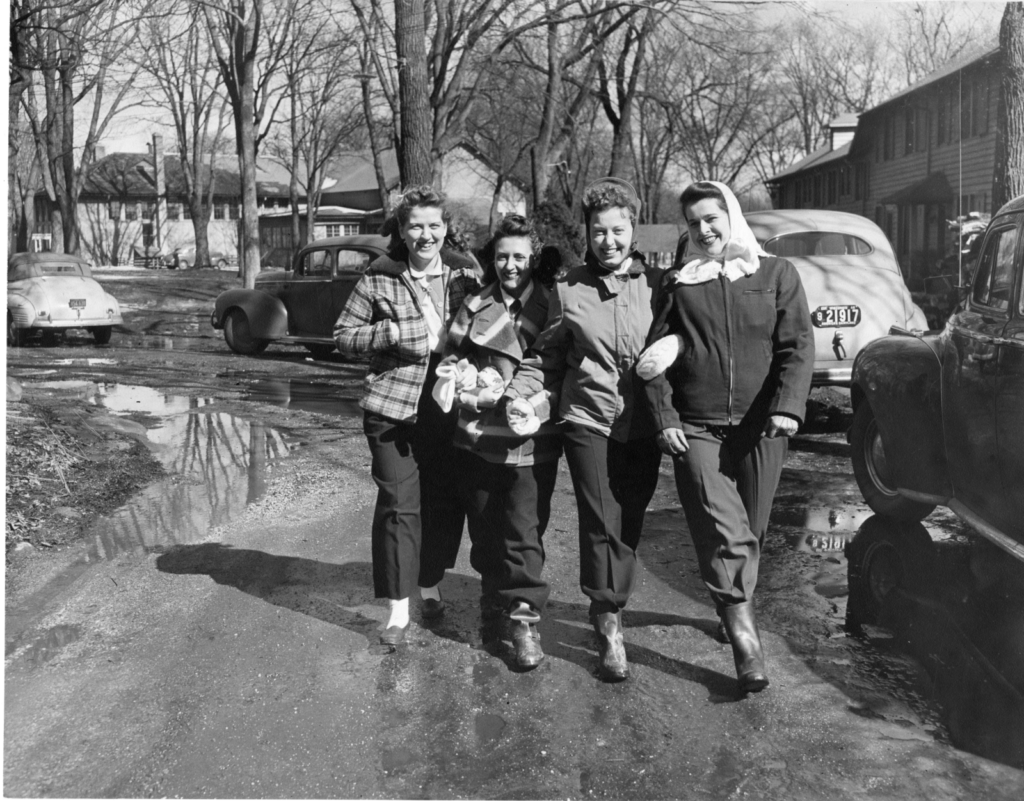Throughout the last academic year, a talented group of graduate students have worked at the Women and Leadership Archives as part of the Illinois History Digital Imaging Grant project. These Digitization and Metadata Assistants, all pursuing degrees in Loyola’s Public History master’s program, have worked diligently on digitizing materials from the Mundelein College* Collections, writing transcriptions, and creating metadata for the Mundelein at 90 digitization project. As their time at the WLA came to a close, they each shared a little about their experiences engaging with the Mundelein College Collections and archival work. The images and digitized materials in this post will be added to the Mundelein College Collection on the Illinois Digital Archives.
I immensely enjoyed being a part of the IHDI grant for the better part of this year. I’ve had the opportunity to scan and digitize numerous photograph collections, transcribe student publications and scrapbooks, and re-folder collections to make them more accessible to the public. Working on each of these projects has allowed me to see the project from many angles. Thus, the experience has been well-rounded and fulfilling. I encountered a variety of archival work which in turn exposed me to a potential career path. The Mundelein at 90 collection is extensive and impressive. The vast number of items displays a full picture of Mundelein’s history, which is enjoyable to behold as a student worker and as a member of the public. Through my time with the IHDI grant, I gained a great appreciation and understanding for Mundelein College.
Continue reading


